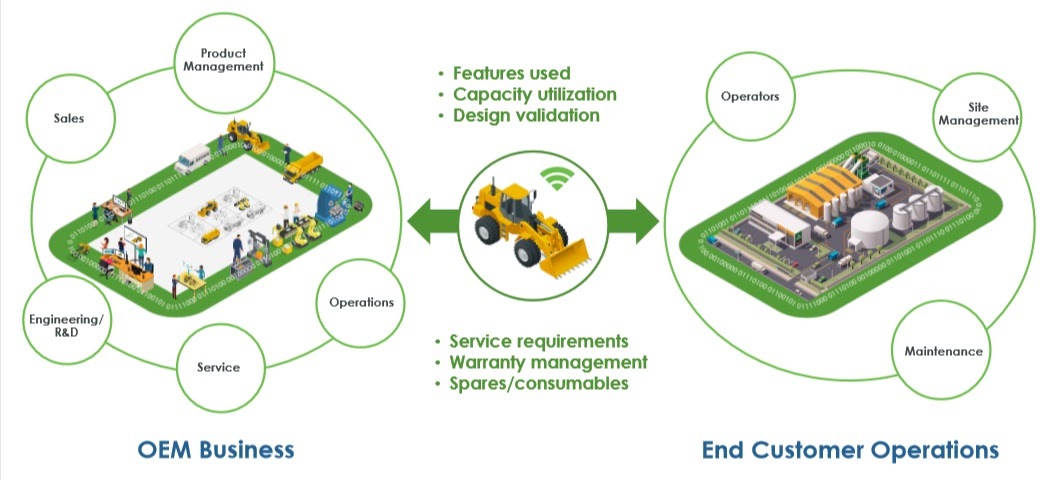The Industrial Internet of Things is enabling service and maintenance organizations to cut costs, deliver better customer experience, and much more. The improvements in technology are now allowing innovative companies to utilize connectivity to build new revenue streams and even new businesses.

Author Iva Danilovic | Copperberg

The sort of economic drivers and benefits that companies are looking to realize where the key point of reference for the IIoT webinar recently hosted by Copperberg. The presenter was Graham Cox, a digital transformation manager at PTC, who explained how the advanced industrial automation applications can drive service efficiencies and create other business values.
——————–
Graham Cox works for PTC, a company that is a global leader in providing digital transformation solutions. He is part of the team based in Europe that works directly with a large number of customers and partners on the delivery and realization of value from the IoT and AR technologies.
Mr. Cox finds an answer to why more and more companies and organizations are looking to adopt these capabilities and looking to realize value from, on a macroeconomic level. To understand how to better optimize future profits, companies can dig into the major analyses conducted inside the industry.
For start, companies can get a high-level overview of the most important trends by taking a closer view of the Stock Exchange. The Standard & Poor’s data based on the US Dow Jones index of top companies listed shows that the lifespan of companies on that index has reduced significantly from approximately 60 years which was the average lifespan time back in the ‘50, to the present day.
Nowadays the lifespan of the top companies on the index is approximately 20 years. Mr. Cox notes that the main reason behind is based on“a lot of mergers and acquisitions and companies getting displaced in the marketplace, which is very much driven by the adoption of new digital technologies such as automation“.
The driving force of changes was also in the center of the research conducted by the IDC. They did a survey of manufacturing companies that were looking to change their business model and their go-to-market model. Over 2000 manufacturers, about 30 percent of them, said that they were looking to start offering the products as services.
“These are not just the products that they’ve traditionally offered, the capital asset, but also to offer complimentary or even in some cases replacement services alongside the physical product”, adds Mr. Cox.
Moreover, a Capgemini survey from 2018 found that 50 percent of products that are going to be brought into the marketplace in the future will actually have connection capability within them.
“These days connectivity is pretty much ubiquitous. We’re getting into the world of 5G now and this is driving new capabilities that are being designed and manufactured into the products before they’re brought into the market”.

Nearly three-quarters of the managers surveyed said that they were looking to make some fundamental shift as a strategy – over half of them were looking to continue to sell their products but complemented with additional services to their customers’ services.
This can allow the customers to get connected better and understand the use of their products throughout the lifecycle to optimize things like uptime availability and reliability. More radically 18 percent of those surveyed were looking to shift entirely to a service-based business model.
“There’s not a lot of data sharing that’s passed back from the service lifecycle into the engineering or manufacturing domain and there’s not a lot of understanding from the customer’s use of the product being passed back to the OEM”. Therefore, the through-life operation of assets and equipment in service is still often disconnected.
This is where IIoT and new digital transformation solutions step in: “By having the connectivity and digital data being passed right through the lifecycle we’re able to get a better understanding of the performance of the assets or the availability of the way in which the product is being serviced and maintained”, the presenter concludes.
Cutting cost is still important but service and maintenance can be a major contributor to revenue growth and profits when powered by technology in the right way.


The value chain is changing





























